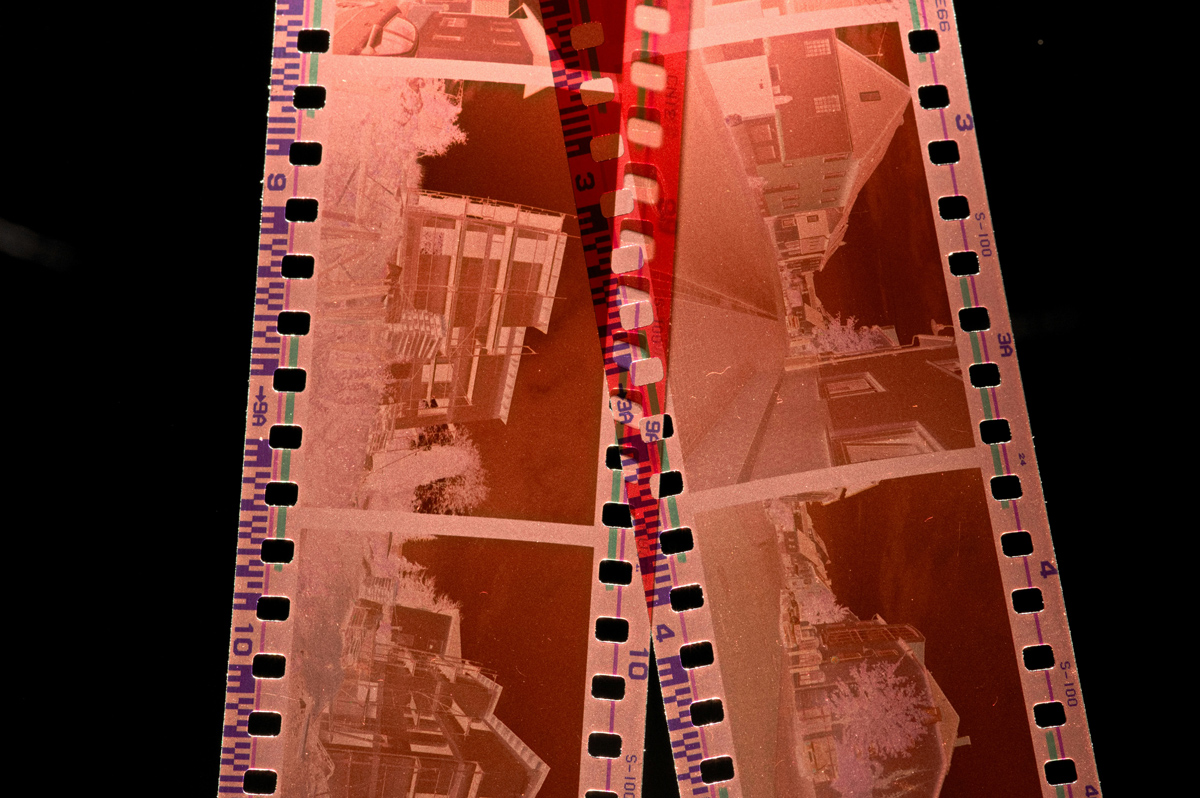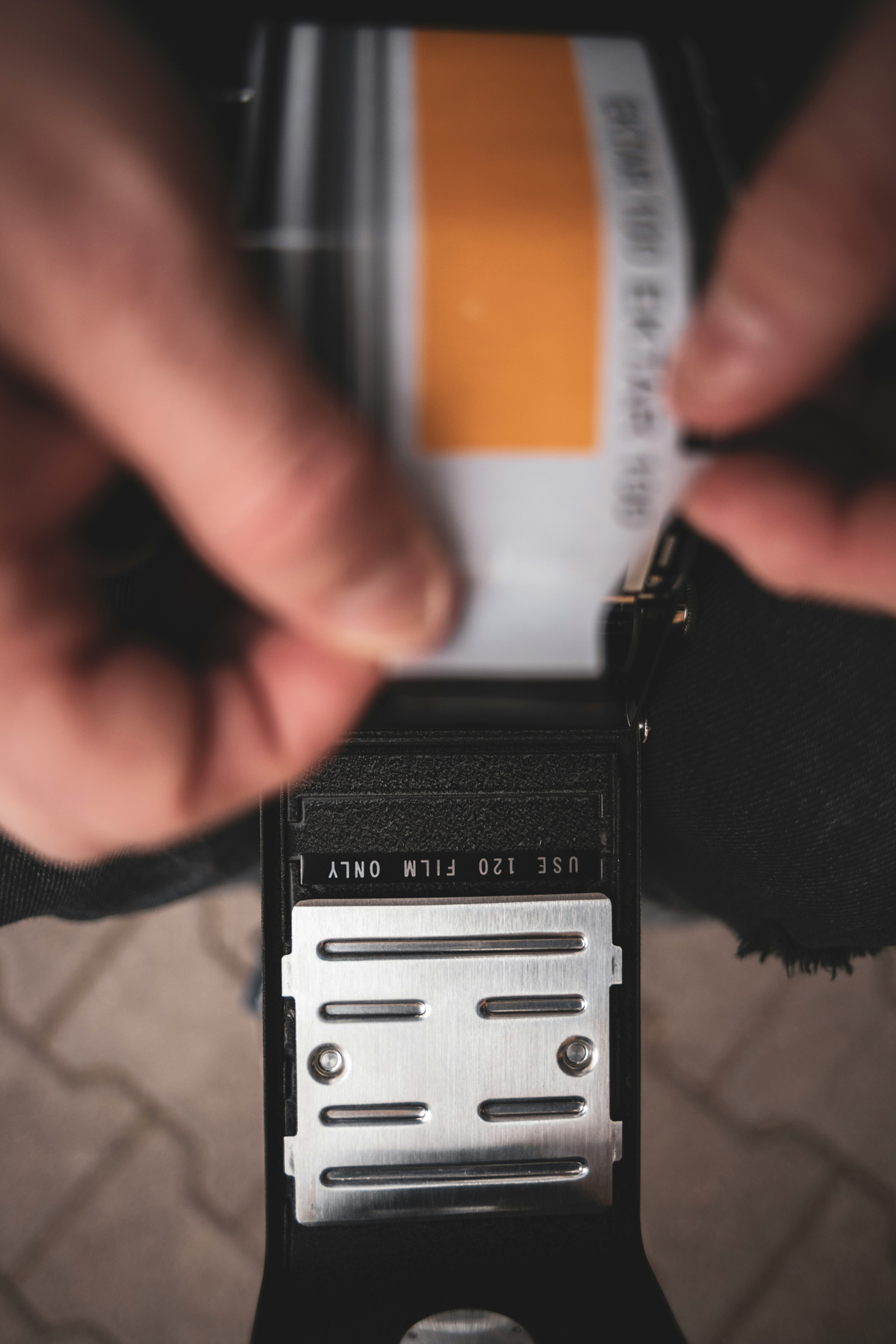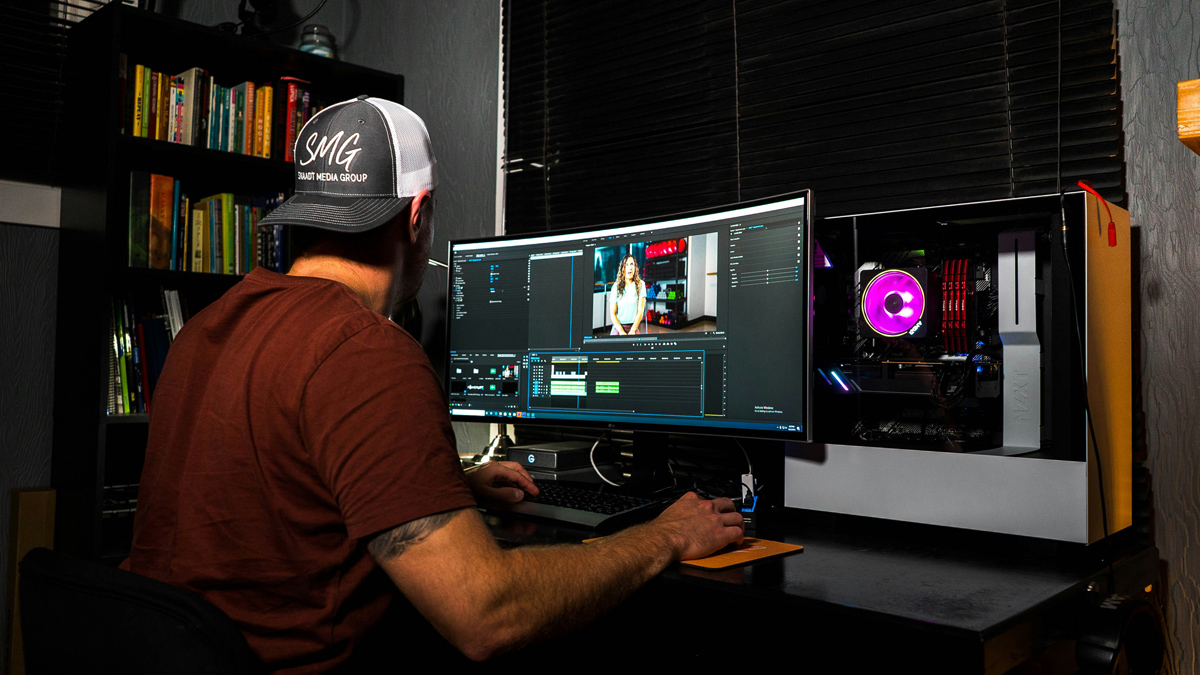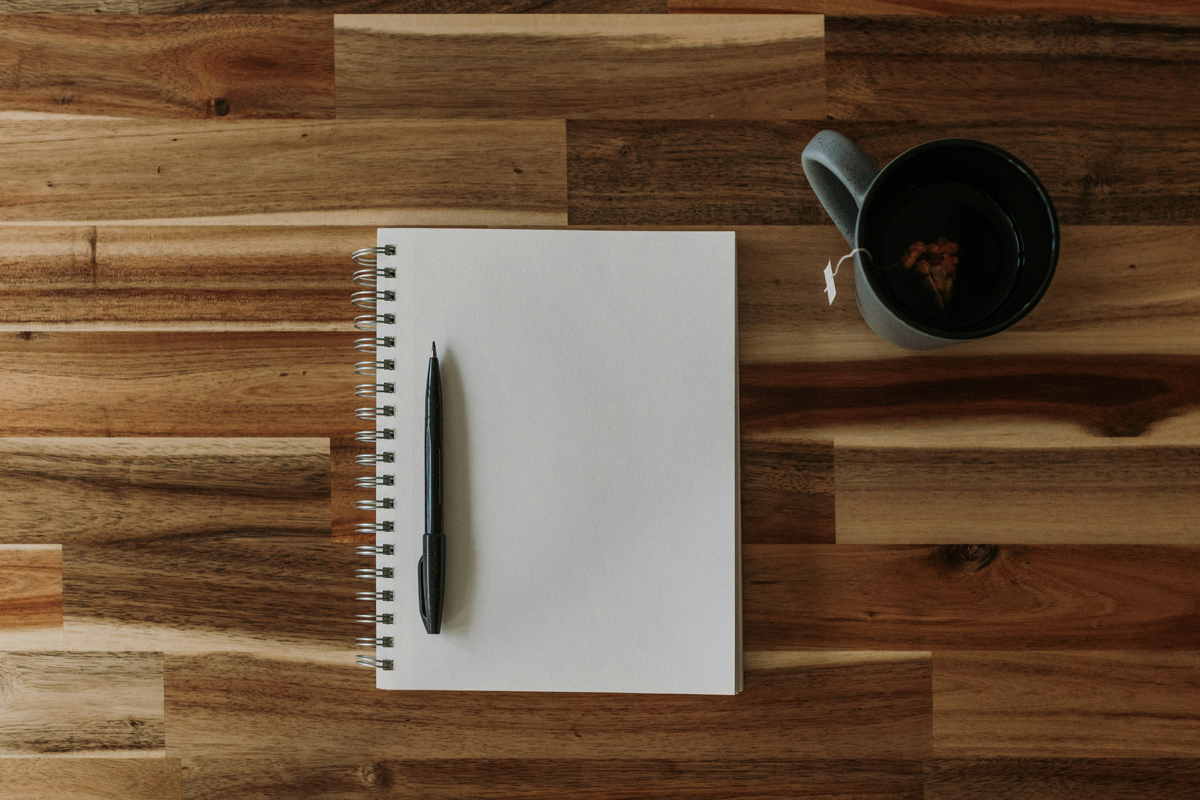Video Marketing Made Strategic: How Professional Production Builds Brand
Video is no longer optional — it’s the most persuasive, high-converting medium in the digital ecosystem. Whether you’re a startup or an established brand, understanding how to use professional video production to market a business is what separates attention-grabbing brands from those lost in the scroll.
Over 90 percent of consumers say video helps them make buying decisions, and brands that integrate video into their marketing experience 49 percent faster revenue growth than those that don’t (Wyzowl 2025 Report).
Professional production gives your content the polish, clarity, and strategic intent required to stand out. It’s not just about visuals — it’s about storytelling precision: lighting, pacing, messaging, and emotional timing all working together to guide the viewer from interest to conversion.
Businesses that treat video as an asset, not an expense, see it drive performance across every channel: website engagement, paid ads, SEO, and social reach. The result is a full-funnel content system that attracts, nurtures, and converts leads consistently.
Role of Professional Production in Marketing
Anyone can record a short clip on a smartphone — but professional production transforms that clip into a narrative that represents your brand’s value. A strong studio partner translates your message into cinematic clarity and brand cohesion.
Professional video production isn’t about glamour; it’s about strategy. Studios like C&I Studios design every project around measurable goals — increasing brand trust, improving ad performance, or driving conversions. Each phase of production (concept, script, shoot, edit, distribution) supports one outcome: measurable growth.
The Strategic Difference
- Creative consistency: Multiple videos built under one visual identity boost recognition and recall.
- Conversion design: From framing to captions, each element is optimized for call-to-action clarity.
- Cross-platform adaptation: Assets are formatted for YouTube, Instagram, TikTok, LinkedIn, and websites without losing quality.
- Data integration: Studios use analytics to refine future content and ensure alignment with performance goals.
The true return on video production isn’t in how beautiful the footage looks — it’s in how effectively it moves your audience closer to a decision.
Crafting a Marketing Strategy Around Video
Before pressing record, you need a plan. The success of video marketing depends on aligning your story with your audience’s intent.
A smart strategy answers three questions:
- Who are you speaking to? Define buyer personas and viewing habits.
- What problem are you solving? Tailor content around pain points.
- Where will your video live? Choose the right platform and format.
When you understand those answers, you can create content that fits the buyer journey — from discovery to loyalty.
Aligning Video to the Sales Funnel
| Stage | Video Type | Goal |
| Awareness | Brand films, culture reels, social teasers | Spark curiosity and visibility |
| Consideration | Explainer videos, product demos, case studies | Build trust and answer objections |
| Conversion | Testimonials, offers, retargeting ads | Drive purchase or contact actions |
| Retention | Tutorials, community highlights | Reinforce satisfaction and advocacy |
A complete marketing plan includes all these layers, ensuring that video supports every phase of your customer relationship.
Types of Videos That Drive Business Growth
Different businesses require different storytelling tools, but professional production allows you to master each. Knowing which video types deliver the best ROI helps determine budget allocation and creative direction.
Brand Story Videos
These communicate who you are — your mission, values, and purpose. They humanize your business, helping customers connect emotionally before they ever buy.
Product or Service Explainers
Explainer videos simplify complex offerings. Through animation, voice-overs, or demonstrations, they convert curiosity into clarity, often doubling landing-page conversion rates.
Testimonials and Case Studies
Social proof remains the most powerful persuasion tool. Filming satisfied clients speaking authentically builds immediate trust.
Educational and Thought-Leadership Content
Tutorials, insights, and expert interviews position your brand as an authority. They also boost SEO by keeping viewers engaged longer on your site.
Short-Form Social Content
Quick, eye-catching Reels, Shorts, or TikToks generate awareness. Even short clips, when produced strategically, can drive high click-through and engagement rates.
Combining these formats creates a holistic presence — storytelling that reaches both hearts and algorithms.
Integrating Video Across Marketing Channels
The true power of video lies in integration. Once produced, your content should fuel every marketing touchpoint — turning one shoot into a multi-channel campaign.
Website
Embedding professional videos on your homepage or landing pages increases dwell time and conversion rates. Google’s algorithm favors video-rich pages, improving organic visibility.
Social Media
Each platform demands different pacing and aspect ratios. Through creative marketing expertise, studios like C&I Studios reformat assets natively for every feed, ensuring optimal engagement without creative redundancy.
Email Campaigns
Adding “video” in a subject line boosts open rates by up to 19 percent (HubSpot Marketing Data). A short embedded clip in newsletters increases click-through dramatically.
Paid Advertising
Video ads outperform static creatives in nearly every metric — engagement, retention, and CTR. When produced professionally, they deliver consistent ROI and brand recall across display and social networks.
Integrating one professionally produced video into multiple channels maximizes exposure while maintaining creative cohesion — one of the smartest ways to stretch marketing investment.
Measuring Performance and ROI
Every great marketing campaign ends with analysis. Tracking the impact of your video ensures that each future project improves efficiency and reach.
Key metrics include:
- View-through rate: How many complete the video.
- Engagement: Likes, shares, and comments that indicate relevance.
- Click-through rate (CTR): How effectively the video drives traffic.
- Conversion rate: How many viewers take desired actions.
Professional studios provide post-campaign reporting dashboards linking creative performance to measurable outcomes. This data clarifies how to use professional video production to market a business effectively — not just through aesthetics, but through consistent, quantifiable growth.
Planning and Executing a Professional Video Production
Once you’ve built a strategic foundation, the next step is execution — the stage where creative vision meets logistics. The difference between average and exceptional marketing video often lies in the precision of planning.
Professional studios treat production as a process, not an event. Every frame has intent, every cut has purpose. Whether the goal is awareness or conversion, the journey begins with structured pre-production.
Pre-Production — Setting the Stage for Success
- Concept development: Identify your key message and emotional tone.
- Scriptwriting: Every second of dialogue must serve your marketing objective.
- Storyboarding: Translating script into visuals clarifies pacing, shot types, and transitions.
- Casting and location: Selecting the right environment or faces to reflect your brand identity.
This stage ensures alignment between business goals and creative execution — eliminating costly reshoots later.
Production — Capturing the Story
During filming, professionals handle lighting, audio, and composition with precision. Consistent visual quality reinforces trust — viewers subconsciously associate production value with brand credibility.
Video production services bring expertise in managing multi-camera shoots, motion graphics, and brand-driven direction. Their teams ensure that every frame fits seamlessly into your broader marketing ecosystem.
Post-Production — Turning Footage into Impact
Editing transforms footage into narrative. It’s where tone, rhythm, and emotion converge. Editors cut strategically for flow, add on-screen text to emphasize CTAs, and color-grade for emotional consistency.
At this stage, professional teams also optimize output for multiple formats — 16:9 for YouTube, 9:16 for Reels, 1:1 for LinkedIn. This multiplies reach without additional filming, maximizing ROI.
Collaborating Effectively with a Video Production Partner
Knowing how to use professional video production to market a business means understanding collaboration. The best results happen when business leaders, marketers, and creative professionals operate as one team.
Clear communication from the start is vital. Define your success metrics — engagement rate, conversions, or brand recall — so the studio can tailor production around measurable targets.
Best practices for productive collaboration:
- Share your marketing calendar early to synchronize content with campaigns.
- Involve your marketing and analytics teams during creative briefings.
- Request mid-project check-ins to review tone and message alignment.
- Encourage open dialogue — great studios value feedback loops over top-down directives.
Studios like C&I Studios integrate collaboration tools and cloud workflows, enabling real-time previewing and feedback. This speeds up revisions, ensuring that every video reflects your brand voice perfectly before release.
Collaboration isn’t just about efficiency — it’s about amplifying creative intelligence. When you combine your internal brand knowledge with a studio’s technical mastery, the result is storytelling that performs.
Scaling Your Video Marketing
A single campaign can drive short-term results, but long-term brand growth comes from consistency. Scaling your video strategy means turning production into a continuous system that feeds all marketing channels.
Building a Content Library
Repurpose your video assets strategically. A well-planned shoot can yield dozens of deliverables:
- A hero brand film for the website.
- Product highlight clips for ads.
- Educational snippets for LinkedIn.
- Behind-the-scenes content for social stories.
By cataloging and tagging assets properly, you create a content library — a reusable archive that fuels months of marketing at minimal additional cost.
Developing a Publishing Cadence
Algorithms reward consistency. Posting regularly across YouTube, TikTok, or Instagram maintains audience retention and strengthens brand familiarity. Partnering with a studio that offers ongoing content packages ensures that new videos align with evolving trends and seasonal campaigns.
Measuring and Iterating
Scaling without feedback leads to stagnation. Measure performance monthly using analytics tools like Sprout Social or HubSpot. Identify high-performing formats, and reinvest resources into those categories.
For example, if customer-story videos consistently outperform ads, shift future budgets accordingly. This iterative cycle turns data into creative direction, driving sustained ROI.
Using Video to Strengthen Brand Storytelling
Beyond metrics and funnels, video remains the most emotional storytelling tool in marketing. It allows brands to convey purpose, humanity, and credibility — all at once.
A well-produced video can make abstract values tangible. Instead of telling your audience that you’re innovative or customer-centric, you show them. Professional production ensures that lighting, color palette, and pacing reflect your personality authentically.
Modern consumers are skeptical of static promises. They believe what they see — and share what they feel. By pairing strategic messaging with cinematic authenticity, you transform passive viewers into active advocates.
As HubSpot notes, 83 percent of marketers say video provides stronger emotional engagement than any other content form. That emotional equity compounds over time, shaping how audiences remember your brand long after the campaign ends.
Leveraging Video for Different Business Models
The way you apply professional production varies depending on your industry and objectives.
B2B Companies
For B2B brands, educational and explainer videos build credibility. Thought-leadership interviews, client testimonials, and process demos shorten sales cycles by reducing buyer uncertainty.
B2C Brands
In consumer marketing, emotional resonance drives action. Product lifestyle videos, influencer collaborations, and short-form social campaigns foster community and virality.
Service-Based Businesses
Service brands gain trust through transparency. Documentary-style storytelling — showing real people delivering real outcomes — creates authenticity that photos or copy alone can’t achieve.
Regardless of industry, the principle remains: align production style with the audience’s decision process.
The Business Case for Professional Production
Some business owners hesitate to invest in professional production due to cost. But the real question is: what’s the cost of poor content? Low-quality video diminishes brand credibility and wastes ad spend.
Professional studios optimize budgets through planning and scalability. By capturing multi-use footage and aligning every shoot with campaign goals, they deliver high-quality outputs at a lower cost per asset.
Furthermore, professional video enhances conversion economics — better engagement reduces cost-per-click in paid campaigns and increases organic reach. According to Wyzowl’s 2025 Video Marketing Report, 91 percent of businesses report positive ROI from video — the highest since 2019.
When you understand how to use professional video production to market a business, cost becomes an investment in scalable storytelling and measurable growth.
Overcoming Common Challenges in Video Marketing
Even with the right strategy, execution can face obstacles. Recognizing these challenges early ensures smoother campaigns.
- Inconsistent brand tone: Solved through centralized style guides and repeatable production frameworks.
- Lack of performance tracking: Addressed with dashboards connecting creative metrics to sales outcomes.
- Content fatigue: Overcome by diversifying formats — alternating between cinematic, educational, and social content.
- Misaligned creative vision: Prevented through structured pre-production workshops with your studio.
A professional partner like C&I Studios mitigates these issues by combining creative agility with technical precision, helping your brand sustain creative energy year-round.
The Future of Video Marketing
The next wave of marketing is immersive. AI-driven personalization, interactive video ads, and virtual production environments will redefine how brands engage audiences.
Professional studios already integrate automation and predictive analytics to forecast engagement patterns. These tools guide creative decisions, ensuring that your next campaign performs even better than the last.
What won’t change is the foundation: strategy, story, and human emotion. While technology enhances production efficiency, authenticity remains the ultimate differentiator. Businesses that master storytelling — and back it with professional quality — will dominate in an attention-scarce marketplace.
From Awareness to Authority
Learning how to use professional video production to market a business means mastering the balance between creativity and commercial intent. Every polished frame, every strategic narrative, becomes a vehicle for visibility and growth.
When you combine professional production, data-driven insight, and consistent storytelling, video stops being a marketing expense and becomes a revenue engine.

































